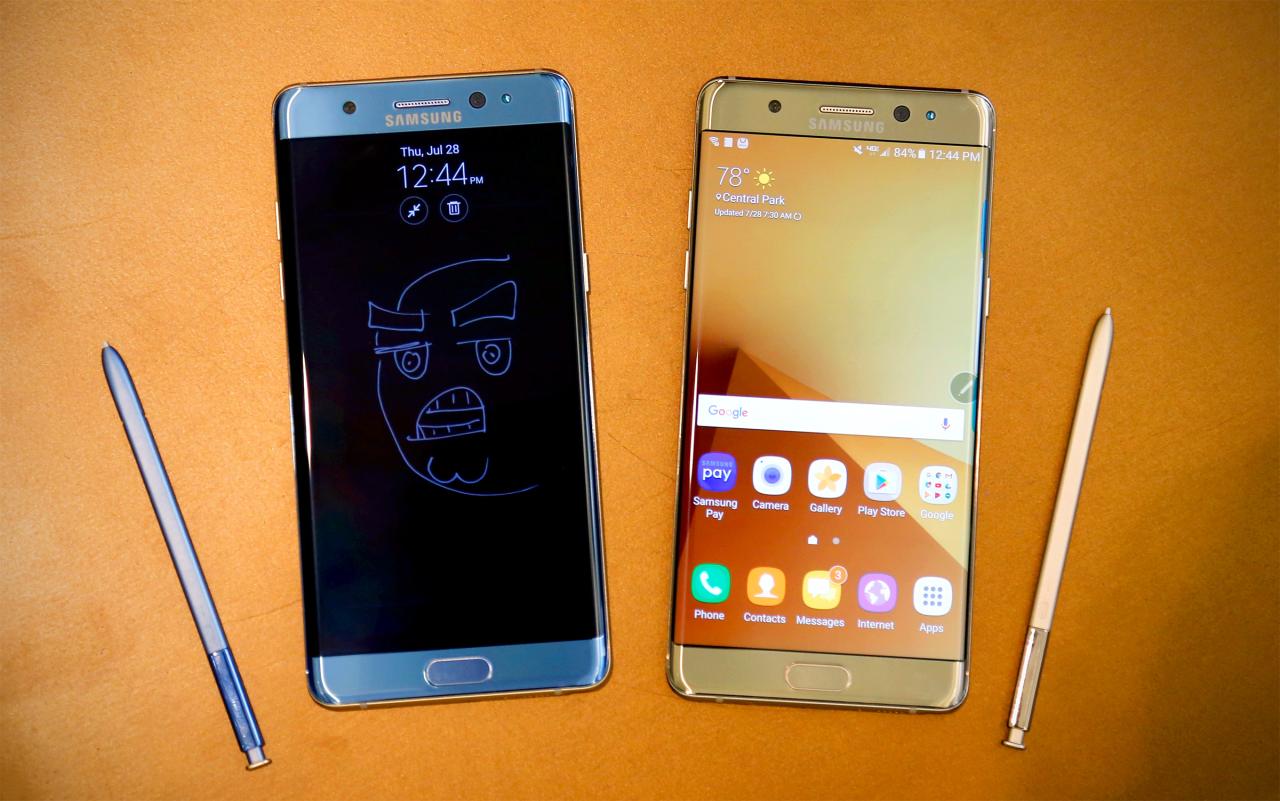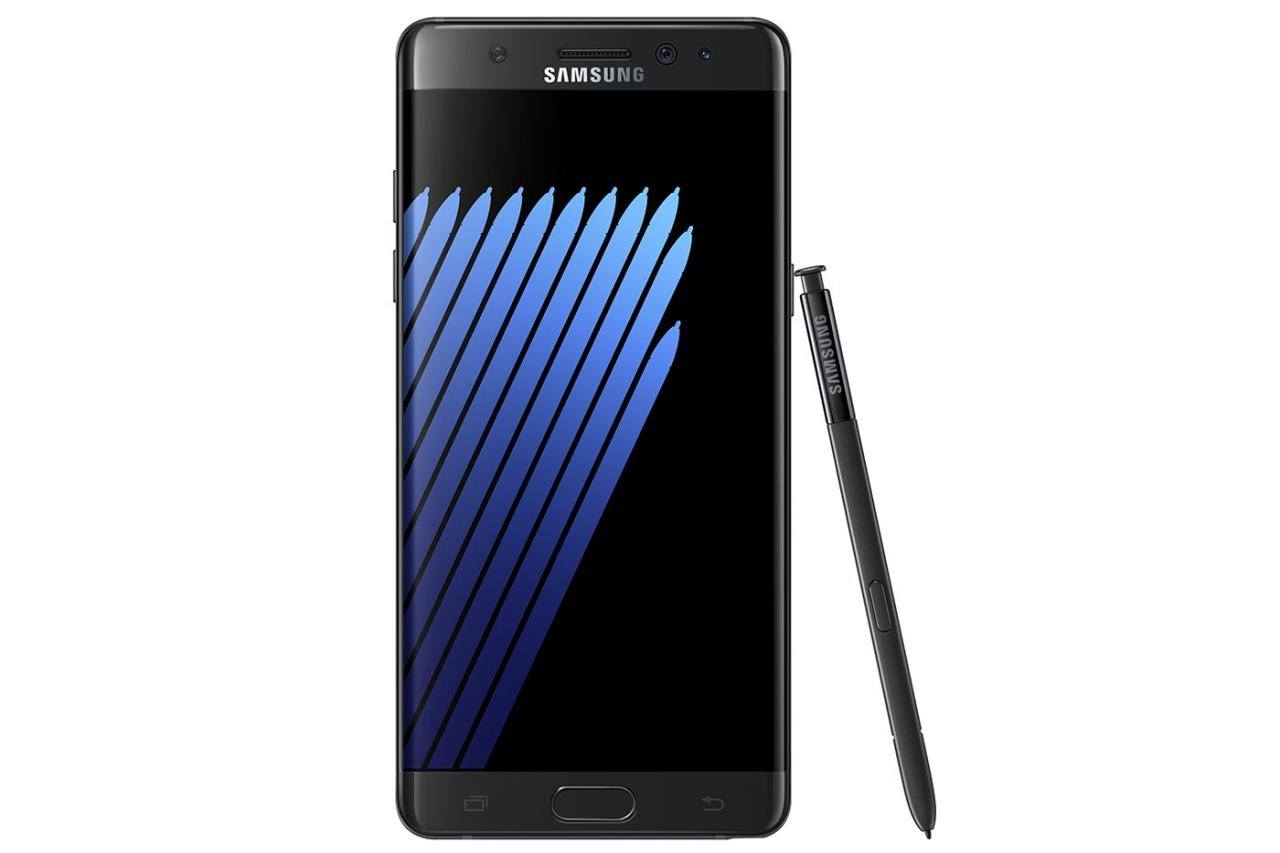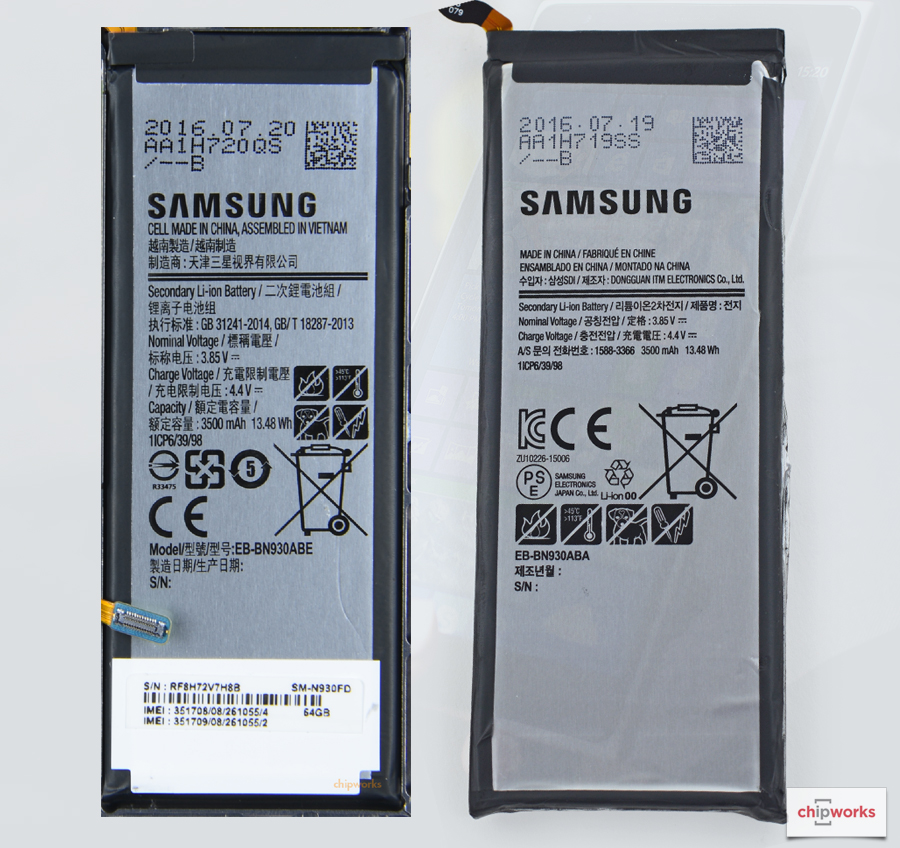Samsung Galaxy Note 7, a device that promised to redefine the smartphone experience, quickly became a pivotal chapter in the history of mobile technology. Marked by its sleek design and powerful features, the Note 7 generated immense excitement prior to its launch, setting high consumer expectations for innovation. However, what began as a celebration of cutting-edge technology swiftly turned into a story of unforeseen challenges and significant lessons in safety and brand management.
With technical specifications that dazzled, including a vibrant display and advanced stylus capabilities, the Galaxy Note 7 aimed to captivate users in a competitive market. Yet, the joy was short-lived as battery malfunctions emerged, leading to a massive recall that would impact not only Samsung but the entire smartphone industry.
History and Launch of Samsung Galaxy Note 7

The Samsung Galaxy Note 7 marked a pivotal moment in smartphone history, showcasing Samsung’s ambition to blend cutting-edge technology with user-centric design. Launched in August 2016, this device emerged from a lineage of innovative products that set the stage for the future of mobile communications.
The development of the Samsung Galaxy Note 7 began early in 2015, following the success of the Galaxy Note 5. Samsung aimed to refine its features and enhance user experience. The device was officially unveiled on August 2, 2016, during a Samsung Unpacked event in New York City. This strategic timing was crucial, as it positioned the Note 7 in the competitive landscape against rival launches from Apple and other manufacturers.
Marketing Strategies During Release
Samsung employed a multifaceted marketing approach to ensure a successful launch of the Galaxy Note 7. Key strategies included:
- Emphasizing Key Features: Marketing campaigns highlighted the phone’s S Pen capabilities, iris recognition, and water-resistant design, appealing to both tech enthusiasts and everyday users.
- Targeted Advertising: Ads were tailored for various demographics, prominently featured on social media platforms, and integrated into major tech publications.
- Influencer Partnerships: Collaborations with popular tech influencers helped create buzz and foster authentic conversations about the device.
- Pre-Order Incentives: Samsung offered attractive bundles, including a free Gear VR headset, which encouraged early adoption and increased consumer engagement.
The combination of these strategies not only generated excitement but also set high expectations for the device among consumers.
Consumer Expectations Prior to Launch
Consumer anticipation for the Galaxy Note 7 was shaped by the reputation of its predecessor and the promise of advanced technology. Key expectations included:
- Enhanced Performance: Users anticipated improvements in processing power and battery life, building off the strong performance of the Note 5.
- Innovative Features: There was considerable excitement about the introduction of new features, such as iris scanning and better integration of the S Pen with productivity tools.
- Design Innovations: Consumers expected a sleek design, influenced by the successful design of the Galaxy S7, which had garnered positive feedback for its premium aesthetics.
- Robust Ecosystem: Given Samsung’s previous successes, users looked forward to a seamless ecosystem that included accessories and integrated services.
The Galaxy Note 7’s launch was positioned to meet and exceed these expectations, which helped establish it as a highly anticipated device in the smartphone market.
Features and Specifications

The Samsung Galaxy Note 7 was launched with a range of advanced features and specifications that not only catered to tech enthusiasts but also set a new standard in the smartphone market. This device was characterized by its powerful performance, innovative capabilities, and sleek design, making it a standout choice for consumers seeking a premium smartphone experience.
The technical specifications of the Galaxy Note 7 were impressive, showcasing Samsung’s commitment to excellence. The device was powered by either the Exynos 8890 or Qualcomm’s Snapdragon 820 processor, depending on the region. It came with 4 GB of RAM and offered storage options of 64 GB, expandable via microSD up to 256 GB. The display was one of the phone’s most notable features, featuring a 5.7-inch Super AMOLED screen with a resolution of 1440 x 2560 pixels, providing stunning visuals with vibrant colors and deep blacks.
Innovative Features, Samsung galaxy note 7
The Galaxy Note 7 introduced several innovative features that set it apart from its predecessors. The integration of the S Pen was enhanced, allowing users to write notes directly on the screen even when the device was turned off, thanks to the “Screen Off Memo” feature. Additionally, the S Pen was now IP68 water and dust resistant, making it more durable and functional in various conditions. One of the standout features was the “Live Message” capability, enabling users to create animated messages with handwritten notes and drawings.
Another notable innovation was the introduction of iris scanning technology for biometric security. This feature allowed users to unlock their device with their eyes, providing a fast and secure alternative to traditional fingerprint scanning. The Galaxy Note 7 also supported HDR video playback, enhancing the multimedia experience by delivering better contrast and increased color accuracy for supported content.
Design Elements and User Interface Enhancements
The design of the Galaxy Note 7 reflected a sophisticated and modern aesthetic. It featured a glass and metal construction, with Gorilla Glass 5 on both the front and back, providing not only beauty but also increased durability. The device’s curved edges provided a comfortable grip, while the sleek silhouette added an element of elegance. The phone was available in several attractive colors, including Coral Blue, Gold Platinum, Silver Titanium, and Black Onyx.
User interface enhancements were also a significant aspect of the Note 7’s design. Samsung’s TouchWiz interface was refined to offer a more intuitive user experience. The addition of software features like the Always On Display allowed users to glance at essential information without needing to unlock their device. The split-screen multitasking feature further enhanced productivity, enabling users to run two apps simultaneously, making it ideal for professionals and multitaskers.
The Samsung Galaxy Note 7 truly set a benchmark in mobile technology with its blend of powerful specifications, innovative features, and premium design elements.
Battery Issues and Recall: Samsung Galaxy Note 7
The Samsung Galaxy Note 7, despite its impressive features and specifications, faced significant challenges stemming from severe battery issues. These complications ultimately led to one of the most notable product recalls in recent smartphone history.
The battery problems were first reported by users who experienced devices overheating and, in some cases, catching fire. Investigations revealed that the batteries produced by Samsung SDI, one of the company’s battery suppliers, had faulty cells that could short-circuit, leading to combustion. To address the situation, Samsung initially issued a voluntary recall in September 2016, encouraging users to exchange their devices. However, the replacement units also started to exhibit similar issues, prompting a second, more comprehensive recall of all Galaxy Note 7 devices globally.
Company Response to the Crisis
Samsung’s response to the crisis was swift and multifaceted, aimed at restoring consumer confidence and ensuring safety. The company implemented several critical measures:
- Immediate Recall: Samsung initiated a global recall of the Galaxy Note 7, urging users to power down their devices and return them for a replacement or refund.
- Investigative Commitments: The company pledged to investigate the root cause of the battery failures, partnering with independent experts to ensure transparency.
- Safety Features: In future devices, Samsung introduced enhanced safety measures, including an eight-point battery safety check to prevent similar issues.
- Communication Strategy: Regular updates were provided to consumers, emphasizing the company’s commitment to their safety and satisfaction.
- Financial Compensation: Samsung offered financial incentives, including discounts on future purchases, to encourage users to return their devices.
Despite these efforts, the recall had a profound impact on Samsung’s brand reputation and sales. The crisis led to a significant decrease in consumer trust and brand loyalty. Market analysis indicated an estimated loss of $5.3 billion in profits for Samsung due to the recall, alongside a notable decline in smartphone sales during the following quarters. This event not only shaped Samsung’s strategies in product development and marketing but also served as a cautionary tale within the tech industry about the critical importance of quality control and consumer safety.
“The Galaxy Note 7 incident highlighted the delicate balance between innovation and safety in the tech industry.”
Legacy and Impact on Future Devices

The Samsung Galaxy Note 7, despite its short-lived existence, left a profound legacy that has influenced both Samsung’s approach to product development and the broader smartphone industry. The challenges faced by the device, particularly the battery safety issues, initiated a ripple effect that continues to shape technological advancements and regulatory frameworks today.
Long-term Effects on Samsung’s Product Development Strategy
The repercussions of the Note 7 incident prompted Samsung to adopt a more rigorous approach to product development and quality assurance. In response to the crisis, the company implemented several strategic changes aimed at enhancing its operational protocols. These include:
- Enhanced Quality Control: Samsung established a more stringent inspection process for components, particularly batteries. The company initiated the “8-Point Battery Safety Check,” which included tests for durability, short-circuit protection, and disassembly evaluations.
- Increased Transparency: The brand improved communication with consumers regarding product safety and recalls. This shift fostered a culture of openness, aiming to rebuild consumer trust.
- Investment in Research and Development: A significant increase in R&D funding was allocated to ensure future devices incorporate advanced safety features and innovations, focusing not just on performance but also on user safety.
Influence on Industry Regulations
The Note 7’s battery failures served as a wake-up call for the entire smartphone industry, leading to heightened safety regulations. Regulatory bodies worldwide took notice, prompting changes that would enhance consumer safety across all mobile devices. Noteworthy adaptations include:
- New Industry Guidelines: Organizations such as the Institute of Electrical and Electronics Engineers (IEEE) and Underwriters Laboratories (UL) revised their standards for battery testing to include more comprehensive safety evaluations.
- Mandatory Reporting of Failures: Manufacturers were encouraged to establish protocols for reporting battery failures and safety incidents, increasing accountability within the industry.
- Collaboration with Regulatory Authorities: Companies began collaborating with international safety regulators to align on best practices and develop universal safety standards for battery technology.
Advancements in Future Galaxy Devices
The legacy of the Galaxy Note 7 also paved the way for innovations in subsequent Galaxy devices. The lessons learned from the Note 7 debacle inspired several advancements, particularly in terms of design and technology integration. Key developments include:
- Improved Battery Technology: Subsequent models, such as the Galaxy S8 and Note 8, featured batteries with enhanced energy density and safety mechanisms, reducing the risk of overheating.
- Advanced Thermal Management: Future devices incorporated improved thermal management systems, allowing for better heat dissipation, thus enhancing overall device performance and safety.
- Integration of AI for Safety Monitoring: Samsung began implementing AI algorithms to monitor battery health in real-time, allowing users to receive alerts on potential issues before they escalate.
General Inquiries
What caused the battery issues in the Samsung Galaxy Note 7?
The battery issues were attributed to a design flaw that led to overheating and, in some cases, fires.
How did Samsung respond to the recall?
Samsung initiated a global recall, offered refunds and exchanges, and implemented a thorough review of their quality assurance processes.
What impact did the Note 7 have on Samsung’s reputation?
The incident had a temporary negative impact on Samsung’s brand reputation, but they recovered through transparency and improved safety measures in future devices.
What innovations did the Note 7 introduce?
The Note 7 introduced features like an improved S Pen, an edge-to-edge display, and advanced camera capabilities.
Did the Note 7 influence smartphone safety regulations?
Yes, the Note 7 incident prompted stricter safety regulations and testing protocols in the smartphone industry.
The Samsung Note7 was not just a smartphone; it was a groundbreaking device that pushed the boundaries of technology. Despite its infamous battery issues, it introduced features that set a standard for future devices. Its design and functionality still influence the market, making it a significant topic of discussion among tech enthusiasts today.
In the realm of flagship devices, the Samsung S9 Plus stands out with its stunning display and impressive camera capabilities. This smartphone combines elegance with power, making it a popular choice for users who seek both style and performance. As advancements continue in mobile technology, the S9 Plus remains a relevant player in the competitive landscape.